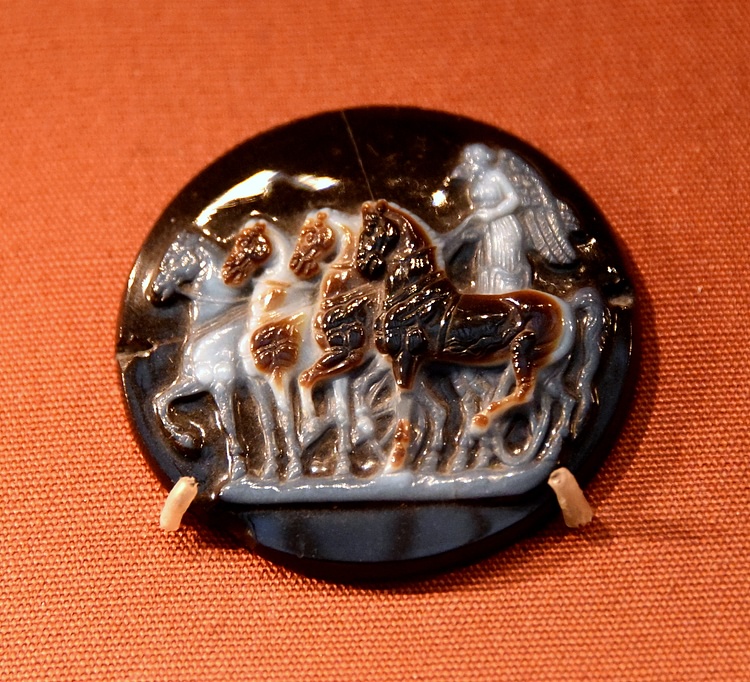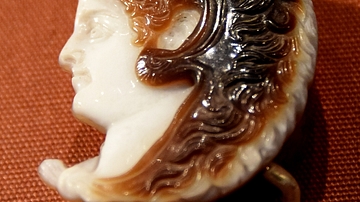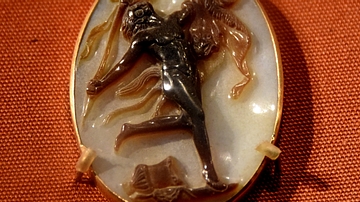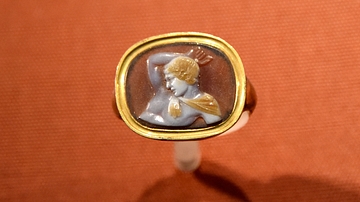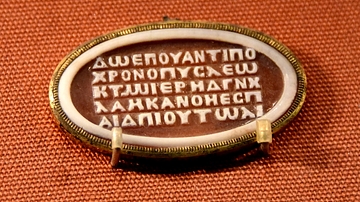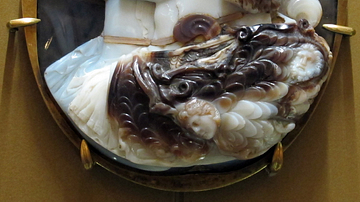Illustration
This sardonyx cameo depicts Nike (Victory). The winged goddess wears a long chiton and drives a 4-horse chariot. Skillful Roman cameo-carvers exploited the tonal contrast of some stones. This could be a simple 2-tone contrast or a more subtle variation using all available gradations of shade. Sardonyx was particularly valued as a cameo-stone. From the Blacas Collection. Roman, 1st century BCE to 1st century CE. (The British Museum, London).
About the Author
Cite This Work
APA Style
Amin, O. S. M. (2016, October 01). Nike & Chariot Cameo. World History Encyclopedia. Retrieved from https://www.worldhistory.org/image/5812/nike--chariot-cameo/
Chicago Style
Amin, Osama Shukir Muhammed. "Nike & Chariot Cameo." World History Encyclopedia. Last modified October 01, 2016. https://www.worldhistory.org/image/5812/nike--chariot-cameo/.
MLA Style
Amin, Osama Shukir Muhammed. "Nike & Chariot Cameo." World History Encyclopedia. World History Encyclopedia, 01 Oct 2016, https://www.worldhistory.org/image/5812/nike--chariot-cameo/. Web. 01 Jul 2025.

